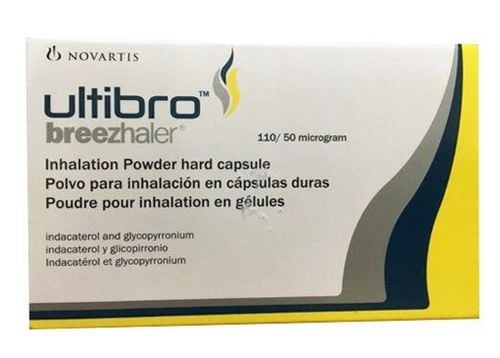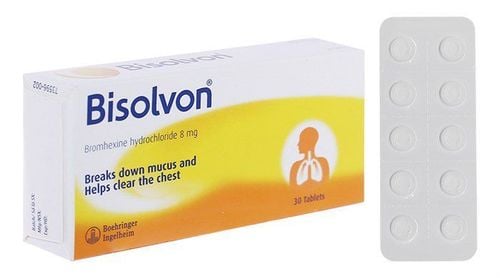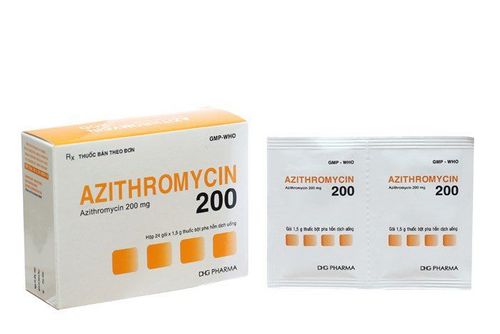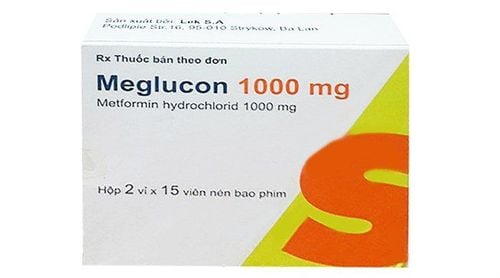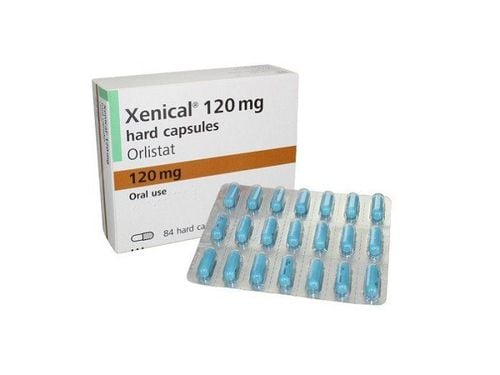This is an automatically translated article.
Articles written by MSc, BS. Nguyen Ngoc Bach, Department of General Internal Medicine - Vinmec Times City International General Hospital
Obesity-associated hypoventilation syndrome, if left undiagnosed, puts you at risk for many complications, including those of obesity. Early treatment can prevent complications. Therefore, accurate disease diagnosis is very important, the following article will provide some methods of diagnosing this syndrome.
To diagnose hypoventilation in a patient who is obese and has no other causes of alveolar hypoventilation, polysomnography with continuous nocturnal carbon dioxide monitoring (the gold standard) is required to assess evaluate patients with suspected obesity-reducing syndrome (OHS). Exploration is done to evaluate for other sleep disorders: such as associated obstructive sleep apnea (OSA).
For patients with progressive decompensated chronic respiratory failure suspected of being due to OHS, immediate treatment with positive pressure therapy is appropriate to stabilize their clinical condition. Once the patient has improved and stabilized, diagnostic evaluation can begin.
To approach the diagnosis of OHS, it is necessary to screen, check for alveolar hypoventilation tests and other exclusion tests to get accurate results about the patient's condition. The following are the steps to perform the diagnosis.
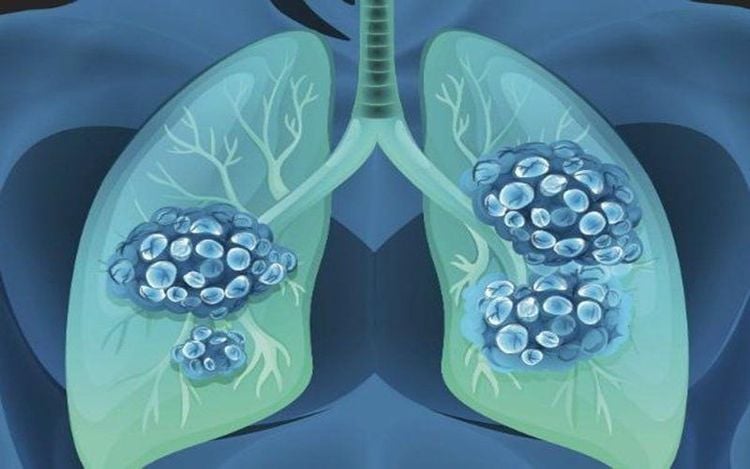
1. Screening Access
Patients with suspected obesity hypoventilation syndrome should be evaluated
Obese patients (body mass index [BMI] > 30 kg/m2) with suspected or known OSA (pre- history of sleep apnea), especially those with severe OSA (eg, sleep apnea index >60 events per hour, (high incidence in this group). Obese patients are more likely to experience detectable hypoventilation during sleep.The prevalence of obesity-associated hypoventilation (ORSH) was 19% among obese patients (BMI >40kg.m-2). ) These individuals experienced an increase in carbon dioxide (CO2) during sleep with normal bicarbonate or an increase during wakefulness while PaCO2 remained <45 mmHg. 93% and a carbon dioxide partial pressure >45 mmHg in the supine position.These findings have led some experts to suggest that ORSH is a precursor to OHS.However, more research is needed to confirm the development. evolution of ORSH to OHS
For those Obese individuals with or without OSA should suspect OHS when the following features are present:
Unexplained peripheral ambient room air saturation (SpO2) ≤94 percent or overnight saturation < 80 parts hundred; Unexplained dyspnea on exertion; Symptoms and signs of pulmonary hypertension and/or right heart failure (eg, jugular venous hypertension, hepatomegaly, and stirrup edema); Signs of polycythemia vera; Increased bicarbonate on venous blood sampling.
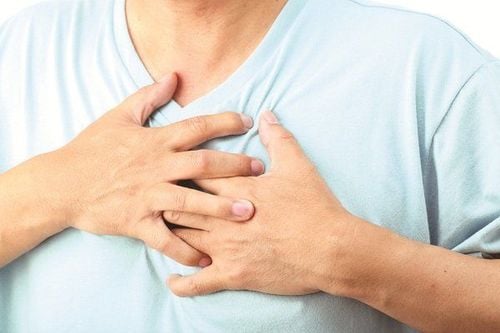
2. Tests for chronic alveolar hypoventilation
In patients with suspected OHS, the presence of chronic hypoventilation is often detected on arterial blood gases (ABG) with chronic respiratory acidosis along with metabolic alkalosis (i.e., high bicarbonate). . Blood Gases (ABG) – “Should blood gases be drawn from all patients with suspected OHS?” Still being discussed. It is recommended that when the suspicion for OHS is strong, an ABG should be measured. An ABG should be performed while the patient is awake, sitting upright, and breathing room air (so that the A-a oxygen gradient can be calculated). In cases where ABG is difficult to obtain, venous blood sampling can be used as a substitute for pH, PaCO2, and bicarbonate. Serum Bicarbonate - For those with low to moderate suspicion (eg, <20 percent), obtaining serum bicarbonate is usually sufficient. Evaluating Outcome: Bicarbonate Level >27 mEq/L - Bicarbonate level rises higher than 27 mEq/L, significantly increasing the likelihood that OHS and ABG should be performed to investigate the presence of chronic respiratory acidosis ( [PaCO2 ] > 45 mmHg). ABG can also identify hypoxemia. Recognition of chronic respiratory acidosis with compensation with metabolic alkalosis should suggest suspicion of OHS. Bicarbonate level is ≤27 mEq/L - If bicarbonate level is ≤27 mEq/L, OHS is less thought of. An arterial blood gas may not be necessary. However, under certain circumstances, colored gas may be considered in obese patients with near-upper limit bicarbonate levels, carefully monitored hypoxemia, and suspected acidosis. -Basic complexity (eg, decompensated episodes of chronic respiratory failure), and other aspects ABG would facilitate to rule out an alternative diagnosis.
3. Other investigations: rule out and diagnose the cause
It is important to rule out other causes of hypercapnia and alveolar hypoventilation. For individuals with chronic respiratory acidosis with established compensatory metabolic alkalosis, additional testing is necessary to rule out other conditions that may be causing or causing alveolar hypoventilation. chronic or hypercapnia. Disorders that often coexist with obesity that can cause hypercapnia include chronic obstructive pulmonary disease (COPD), restrictive lung disease (eg, neuromuscular weakness, severe interstitial lung disease, chest wall disease), hypothyroidism, electrolyte disturbances and chronic. Investigations should be individualized after history and physical examination but typically include:
Serum electrolytes testing - Electrolyte disturbances that may worsen decompensation of hypercapnia including hypocapnia phosphatemia, hypokalemia and, rarely, hypermagnesemia, hypokalemia or hypercalcemia. If present, these disorders must be treated and blood gas tested again. Peripheral blood cytology: Chronic hypoxia due to underlying respiratory disease may be associated with polycythemia vera, which can be a useful tool for monitoring response to treatment. Although rare, an increased percentage of eosinophils has been associated with neuropathy. Thyroid function tests: Hypothyroidism may contribute to chronic hypoventilation of OHS by decreased chemoreceptor responsiveness, causing OSA (due to enlarged tongue and/or decreased upper airway muscle tone). ), or cause neuromuscular disease affecting breathing. Pulmonary function tests: Pulmonary function tests (PFTs) including spirometry, lung volume, diffusing capacity, and inspiratory manometry can facilitate identification and severity. importance of underlying lung disease and should be performed in individuals with chronic disease. Imaging: should be done to rule out parenchymal lung disease, chest wall disease, diaphragmatic dysfunction (eg, diaphragmatic paralysis), and cardiomyopathy. Other: Rarely, toxicology tests (eg, detection of benzodiazepine or drug use) or detection of creatine phosphokinase enzymes (eg, myositis).

4. Definitive diagnosis
Polysomnography (PSG) is an important test that should be performed in all patients with suspected OHS. The differential diagnosis of obstructive sleep apnea (OSA) alone can be made from other sleep breathing disorders (SDB). Factors that favor the indication for polysomnography include obesity (body mass index [BMI] > 40 kg/m2), a high likelihood of sleep-related hypoventilation (because CO2 monitoring is only available). available when tested at the center), significant daytime and heart failure or nocturnal hypoxia. The home spirometry test (HSAT) is not ideal to rule out OHS because the HSAT is best suited for highly suspected cases of uncomplicated obstructive sleep apnea. It should be noted that the HSAT does not detect sleep-related hypoventilation, so a PSG with continuous nocturnal carbon dioxide monitoring is required. HSAT may be appropriate in individuals with non-morbid obesity (BMI 30 to 40 kg/m2) where the likelihood is. Identify sleep disorders associated with high OSA or those with cost problems who cannot yet assess polysomnography. Although PSG or HSAT are not required to diagnose OHS, the population of patients with OHS has a very high prevalence of OSA and other sleep-related disorders. Determining the type of SDB is important because it has implications for the type of therapy used.
Although, the AHI index in OHS patients is likely to be higher than in those with OSA alone, it is not statistically different. However, patients with OHS tended to have severe OSA (eg, AHI > 50/hr) and often experienced more profound hypoxia during sleep than patients with OSA alone with <90 percent saturation in the second half of the brain. big sleep. OHS is a diagnosis of exclusion that can be made when the following criteria are met: Obesity (body mass index [BMI] > 30 kg/m2) Awake alveolar hypoventilation on arterial blood gases with PaCO2 >45 mmHg Alternative causes of hypercapnia and alveolar hypoventilation have been ruled out Although most also have disturbances in sleep breathing (nocturnal nonobstructive obstructive events), a decrease Alveolar ventilation while awake (usually during the day) is the diagnostic criterion. The exclusion of a cause of hypercapnia due to ventilation is an important requirement for the diagnosis of OHS. In clinical practice, it is common for patients to have other diseases that cause acute and/or chronic hypercapnia. However, assessing the role of other causes can be difficult and an obstacle to clinical judgment. The diagnosis of OHS is appropriate only when there is evidence to exclude other causes that have no or little impact on hypercapnia. Because the symptoms are nonspecific, the diagnosis of OHS is often delayed. It is often misdiagnosed as asthma or chronic obstructive pulmonary disease and some patients are not diagnosed until hospital admission because of a decompensated exacerbation of chronic respiratory failure.

5. Differential diagnosis
The primary differential diagnosis for symptoms of OHS is obstructive sleep apnea (OSA). The two disorders are often clinically indistinguishable from each other. In the setting of OHS there is a chronic respiratory acidosis with compensatory metabolic alkalosis. Common causes of hypercapnia and alveolar hypoventilation are often distinguished by history, physical examination, respiratory function, imaging, and laboratory tests: Chronic Obstructive Pulmonary Disease (COPD) - COPD can be identified in people with a history of smoking, obstructive pulmonary dysfunction, and chest X-ray images of emphysema. Interstitial Lung Disease (ILD) - ILD can be identified in individuals with imaging findings of lung parenchymal abnormalities and limited ventilation in respiratory function. Neuromuscular Disorders (NM) - Neuromuscular disorders can be identified by history (eg, weak cough), weakness on respiratory muscles, and restrictive ventilation and respiratory muscle weakness on control. lung function test. Chest imaging may suggest diaphragmatic paralysis. Chest wall disorders - Such disorders (eg, kyphoscoliosis) may be apparent on physical examination or on imaging studies. Hypothyroidism: Hypothyroidism is often evident on laboratory tests. Chronic sedation use - Sedative use can be found in history or toxicity testing.
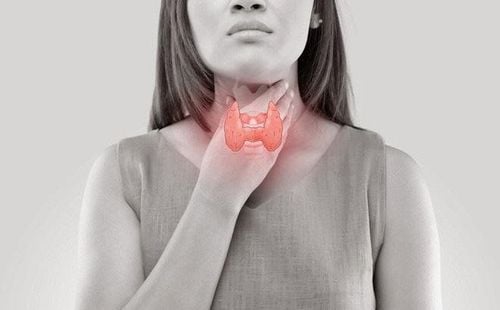
6. Evaluation of complications
All patients with obesity hypoventilation syndrome (OHS) after diagnosis should be evaluated for common complications, many of which are similar to those of excess weight: upper respiratory tract , pulmonary, neurological, endocrine, cardiovascular...
Specifically, patients with OHS should be evaluated for the following common complications:
Mild to moderate pulmonary hypertension (PH) - Up to two one-third of patients with OHS have PH. Therefore, at diagnosis, we often perform electrocardiograms and echocardiograms in this population for evaluation. Cardiovascular and metabolic disease: Conditions such as hypertension, congestive heart failure, and insulin resistance are all more common in patients with OHS than in obese patients and may present three or more years before diagnosis OHS. Therefore, at the time of diagnosis, we typically perform blood fasting to assess plasma glucose, triglycerides, and cholesterol to ensure comorbidities have been identified and are being managed appropriately. Obesity-associated hypoventilation syndrome, if left undiagnosed, puts you at risk for many complications, including those of obesity. Early treatment can prevent complications. When treatment will support ventilation status to improve nighttime hypoxemia and increase serum CO2, patients will improve respiratory disorders. Many studies have demonstrated that patients with OHS detected and treated early have a longer life expectancy than patients with late treatment or no treatment.
If you are overweight, obese or at risk, you should have regular check-ups to detect health abnormalities early. Currently, Vinmec International General Hospital has general health checkup packages suitable for each age, gender and individual needs of customers with a reasonable price policy, including:
Health checkup package general Vip Standard general health checkup package Patient's examination results will be returned to your home. After receiving the results of the general health examination, if you detect diseases that require intensive examination and treatment, you can use services from other specialties at the Hospital with quality treatment and services. outstanding customer service.
Please dial HOTLINE for more information or register for an appointment HERE. Download MyVinmec app to make appointments faster and to manage your bookings easily.






